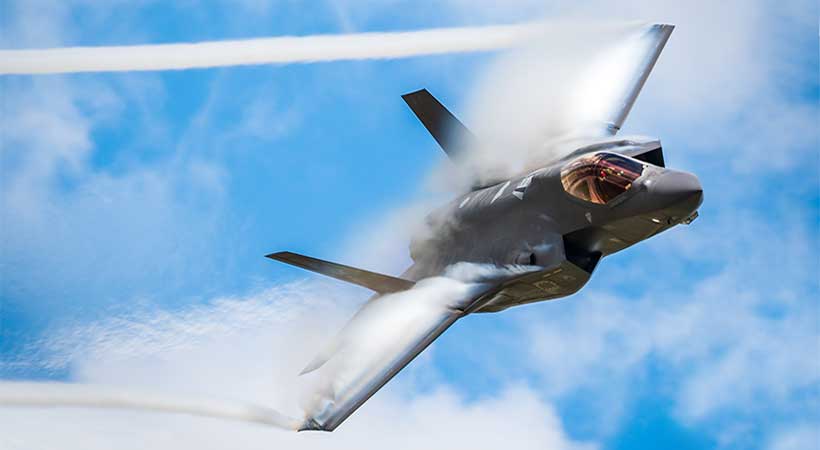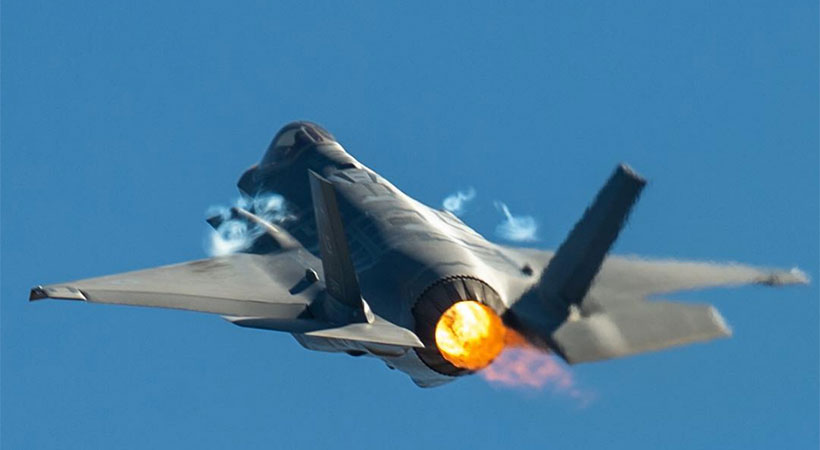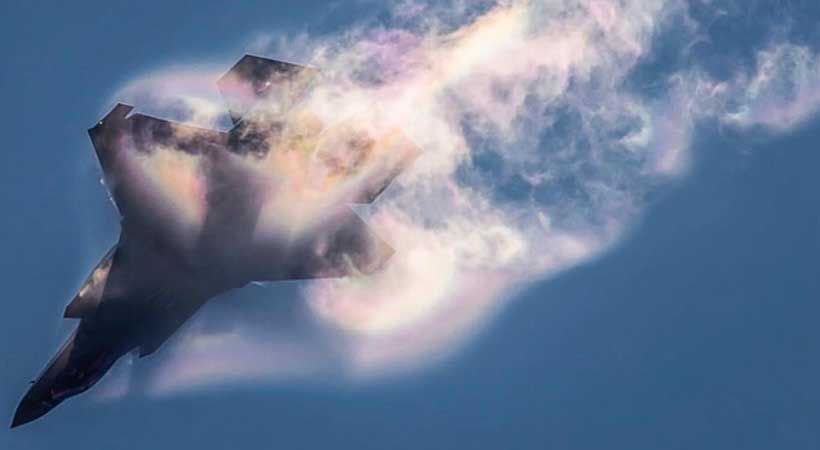
Lockheed Martin F-35 Lightning II
The Lockheed Martin F-35 Lightning II, also known as the F-35 Joint Strike Fighter, is the most advanced stealth fighter in the world today. The full capabilities demonstration features 12 different maneuvers that last approximately 15 minutes. During the demo, some of the maneuvers will see the F-35 as low as 200 feet off the ground and at speeds that exceed 700 mph. The two most eye-popping maneuvers include the pedal turn where the F-35 drops in a tight turn at near zero forward speed and the tactical pitch where the jets enters at a high speed and then turns abruptly to literally skid across the sky.
In the tactical pitch the F-35 enters at a high speed and then turns abruptly to literally skid across the sky!
The Lockheed Martin F-35 Lightning II, also known as the F-35 Joint Strike Fighter, is the most advanced stealth fighter in the world today. The full capabilities demonstration features 12 different maneuvers that last approximately 15 minutes. During the demo, some of the maneuvers will see the F-35 as low as 200 feet off the ground and at speeds that exceed 700 mph. The two most eye-popping maneuvers include the pedal turn where the F-35 drops in a tight turn at near zero forward speed and the tactical pitch where the jets enters at a high speed and then turns abruptly to literally skid across the sky.
The F-35 is capable of performing ground attack, aerial intelligence and air defense missions. There are three different models of F-35 tailored to the specific mission of our three branches of the military that fly fixed wing aircraft. The F-35A is the Air Force version, designed for conventional takeoff and landing. The F-35B is primarily designed for the Marines with short take-off and vertical-landing (STOVL) capability. The F-35C is the carrier-based version designed to operate off the Navy’s nuclear aircraft carrier fleet. There are also nine active international partners in the F-35 program


Avionics systems include a highly accurate enhanced global positioning and inertial navigation systems, or EGI, in which computers provide steering information to the pilot. The plane has UHF and VHF radios plus an instrument landing system. It also has a warning system and modular countermeasure pods to be used against airborne or surface electronic threats.


























No Comments